Terminal stations had the main problem that all trains had to get in and out at the same side of the station, reducing efficiency considerably. A much more efficient solution are through stations, sometimes also called RoRo (Roll On, Roll Off). This means that trains enter the station at one side and leave it on the other one. All the designs highlight various aspects of through stations, and some of these designs should be combined to get the best results.
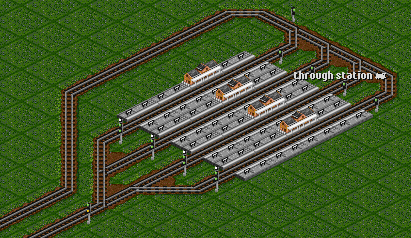
This is the basic through station. Trains come from the left and leave to the right, just to follow the loop and return back to the left.
Signalling is a bit more complex: There is a path signal to the left, while in front of the platforms there are one-way signals with inverted routing. This means, for the pathfinder these signals act as two-way signals. That tricks the pathfinder into treating all platforms as equal choices, so that all platforms can be accessed. Standard two-way signals are not placed here for one reason: If trains are allowed to reverse at stations, they might do that and enter the junction, even though they could not find a way to their destination there.
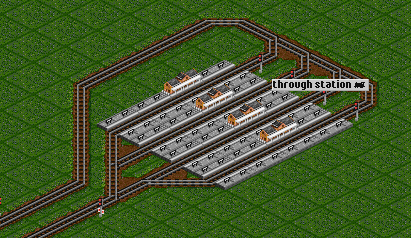
Signalling a through station is pretty straightforward. In front of the station there is a one-way path signal, which regulates entry to the platforms and prevents trains from going back that way. Trains wait at this signal when all platforms are blocked. On the exit side, standard path signals are used to regulate traffic.
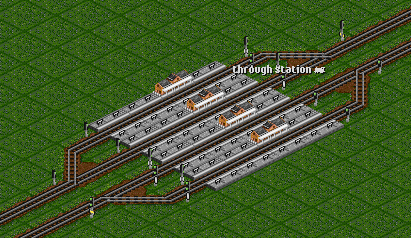
This setup is common for double track layouts. One could also use path-based signals, but they would only give a tiny advantage on the entry side.
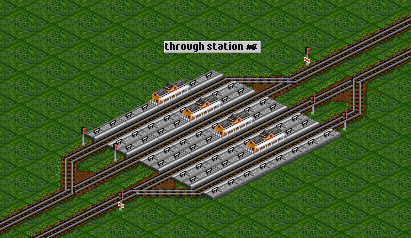
A through station at a double-tracked line can be built following the same scheme. In front of the station there is a one-way path signal, behind the platforms there are standard path signals.
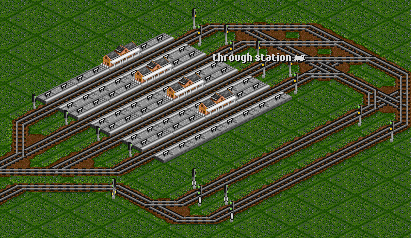
This advanced design incorporates two queueing tracks to the right of the station, where trains will wait if all platforms are occupied. The entry side makes use of PBS as the block is quite lengthy. On the exit side, standard signals are used, PBS does not give any advantage there anyway.
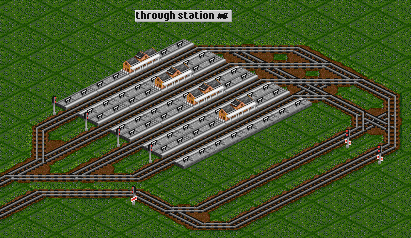
In case a station is heavily trafficked, it might be useful to build a "waiting area" in front of it, so trains can wait there for a free platform. Signalling is realized using standard path signals just like in the other examples.
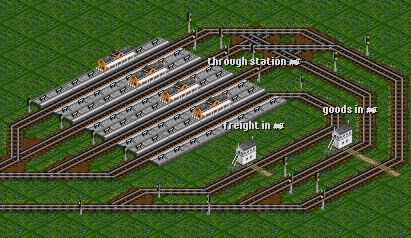
This is a design for a freight station at a secondary industry, such as a factory or a steel mill. Trains delivering raw materials pass the "freight in" waypoint and have their dedicated platform to unload. The trains that load the produced goods pass the other waypoint and have three platforms to wait for full load, plus additional queuing tracks if all platforms are full.
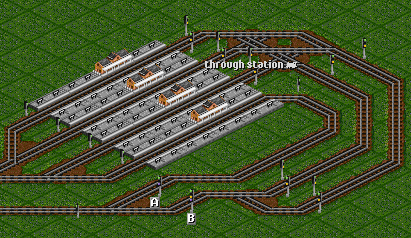
Sometimes there is no room for waypoints, or there are already too many stations. In such a case, one can built signals with routing restrictions. his layout works just like the one before, but the signals A and B replace the waypoints. To do that, signal A has the restriction "Train cargo is not goods" (to prevent goods trains going there), signal B is restricted by "Train cargo is goods" (to prevent raw material trains going there).
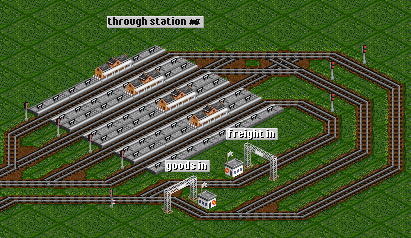
If there are trains that collect produced goods and other trains bringing raw material supplies, one should take care that the latter goup always has access to a platform. Otherwise the whole station might get blocked by waiting trains, effectively shutting down production as no supplies can be delivered. One can use waypoints to ensure correct routing, trains carrying raw materials go through waypoint "freight in", the others enter through waypoint "goods in".
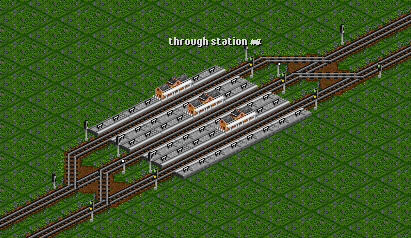
Especially for smaller through stations along double tracked lines, it may be sufficient to use two or three platforms and to allow trains to use these platforms in both directions. This requires through signals as shown in the picture. Here, only the middle track is bi-directional, the outer platforms can only be used in one direction. If more bi-directional platforms are necessary, they have to be signalled in the same way as the middle platform in this example.
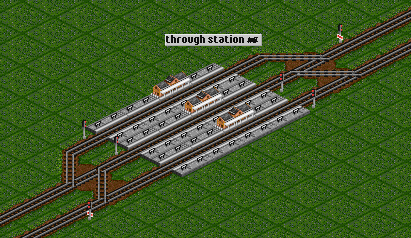
Platforms which are to be used in both directions are easily created using path. In this example, the middle platform can be used in both directions, the outer platforms are only used in one direction each, with the signalling corresponding to the standard through station layout. The platform in the middle has path signals at either end. A train can reserve a path through the signal into the platform. After loading, it waits at the signal and reserves a path out of the station. This works in both directions and also if trains are allowed to reverse at stations.
